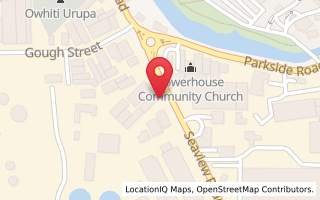
SOLAR BASICS -INFORMATION YOU SHOULD KNOW
First we think you need to know that solar is not the 'cure all' for replacing spent energy. For example we have people trying to recharge batteries for Trolling Motors, Boat & RV House batteries, Electric Mobility Scooter, Baches, Cribs, Caravans, etc. and they want it done in a short time, usually less than several days. So lets take a dead 100-amp hour battery and charge it with a 30-watt solar panel, under ideal summertime light conditions the battery would be nearly charged within 7 days. So you can now see that it will take at least 100-watts of solar power to recharge a 100-amp hour battery in several days. Keep in mind that it takes direct sunshine on the surface of the panel to produce the maximum rated power of a solar panel. If you have conditions such as overcast, shadows, improper mounting angle or equatorial direction and short winter days, then these will reduce the rated solar output.
THE BATTERY CELL RECOMMENDATIONS FOR SOLAR
Keep it Simple, we recommend doing your own installs as this is the best way to learn. We can provide installers for larger projects or if you simply want someone else to do it. It is still up to you to familiarise yourself with the components and the features, indications and fault displays/sounds. SOLAR PANEL --> CONTROLLER/REGULATOR --> BATTERY/S, extras inbetween =simple. See some of the diagrams below for set-ups, from simple to as fancy as you like
VOLTAGE RATING
Most solar products we are involved with are designed for 12 VDC, if 24 volts or greater is needed solar panels may be wired in series. Or we can special order solar panels that are made to deliver more DC Volts such as 24, 36, 48 etc.
POWER RATING WATTS AND AMPS
Solar panel manufacturers rate solar output in watts. As a rule of thumb, a rating of 15 watts delivers 1 amp per hour in direct sunlight. Typically this output is stored in a battery. The battery stores this energy for use, also the battery will act as a filter to prevent damage to sensitive electronics. A very popular 5-Watt for instance can output one third of an amp per hour. This is a very popular panel for maintaining single and dual batteries for stand-by and storage applications. Note we say MAINTAINING as opposed to charging a flat battery.
HOW DO I FIGURE SOLAR PANEL SIZE
This is all a matter of numbers of power-in vs. power-out. You need to know how many amp hours or watt hours you are using based on a period of time; this figure could be measured in hours or days. Then figure the amount of direct sunlight the solar panel will receive in a day and come up with a total amount of watts-hours output. Output should exceed consumption by about 20% to compensate for efficiency variables.
USE OF AN INVERTER
Many folks use an inverter to convert 12 VDC to 220 VAC. Inverters are power gobbling monsters and should be avoided whenever possible. If you have a choice of a 12 volt dc powered device or 220 volt ac device; go with the 12 volt dc device. There are dc devices on the market that either step down or up dc power and these also use significantly more power. FORMULA DC to AC via an Inverter Formulas and Examples for 12 & 24 Volt DC Systems
This “Rule of Thumb” is intended only as a general guide for estimating the DC amps required to operate a DC to AC inverter. Since the calculations yield approximate values, an appropriate safety factor should be considered when designing and specifying system components, for example: wire size, and length.
MICRO-INVERTERS, used to connect directly to Solar panels converting the power from DC to AC enabling direct connection to Mains power supply/devices, we recommend the connection to AC supply/devices to be done by qualified personelle.
12 Volt DC Systems
Formula: 12 volt inverters require approximately ten (10) amps DC input for each 100 watts output power used to operate an AC load.
Example: How many DC amps will a 12-volt inverter require to operate three 500-watt quartz lights, or a 1500-watt electric heater?
Answer:
1) Total watts = 1500
2) 1500 watts/100 (from formula) = 15
3) 15 X 10 amps (from formula) = 150 amps. This is the DC current the inverter will use to operate the 1500-watt load. Note that if these 150 amps are drawn from the battery for one hour, 150 amp hours of battery power will be used.
To support 150 amp hours of battery power 300 amps of battery capacity should be used for maximum battery life and performance.
24 Volt DC Systems
Formula: 24 volt inverters require approximately five (5) amps DC input for each 100 watts output power used to operate an AC load.
Example: How many DC amps will a 24-volt inverter require to operate three 500-watt quartz lights, or a 1500-watt electric heater?
Answer:
1) Total watts = 1500
2) 1500 watts/100 (from formula) = 15
3) 15 X 5 amps (from formula) = 75 amps. This is the DC current the inverter will use to operate the 1500-watt load. Note that if these 75 amps are drawn from the battery for one hour, 75 amp hours of battery power will be used.
To support 75 amp hours of battery power 150 amps of battery capacity should be used for maximum battery life and performance.
CHARGE CONTROL (REGULATION)
A charge controller is a good idea in the majority of applications. A charge controller can provide several benefits such as preventing overcharge, improve charge quality, and prevent battery discharge in low or no light conditions.
Some solar panels are made with blocking diodes pre-installed which prevent battery discharge during low or no light conditions. In most cases where a 6-watt or larger solar panel is in use a charge controller is highly recommended.
OUTPUT CONDITIONS
Solar panel ratings are calculated in bright direct sunlight. Conditions such as indirect sunlight, overcast and partial shade will decrease the output. Over sizing the solar output should be considered if any of these conditions occur often. Another situation to consider is the length of daylight in summer vs. winter.
OPERATING A DEVICE DIRECTLY FROM SOLAR PANEL
Yes, this can be done as long as the device is designed for such an application and not sensitive to voltage variations. It is best to use a battery as a storage container for energy that will provide a constant source of reliable power.
ARE SOLAR PANELS WEATHER PROOF
Yes, most are. BUT make sure you ask if you are not sure.
DO I HAVE TO MAINTAIN SOLAR PANELS
A periodic inspection to remove dirt, debris, and check electrical connections is all that is needed.
HOW LONG DO SOLAR PANELS LAST
Performance of a solar panel will vary but in most cases guaranteed power output life expectancy is between 3 and 25 years. This guaranteed life expectancy rating is usually 80% of the published rating of the Solar panel
SOLAR SYSTEM WIRING EXAMPLES
Below is a selection of some solar wiring set-ups, examples -REMEMBER, Keep it Simple.
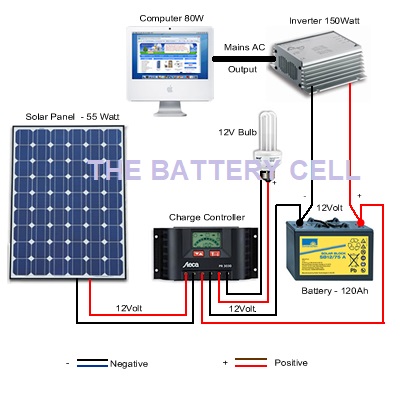
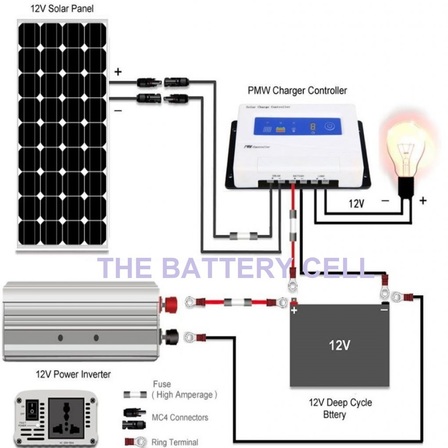
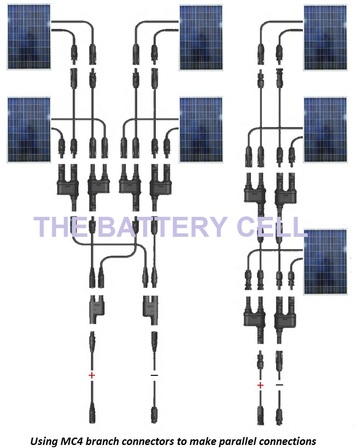
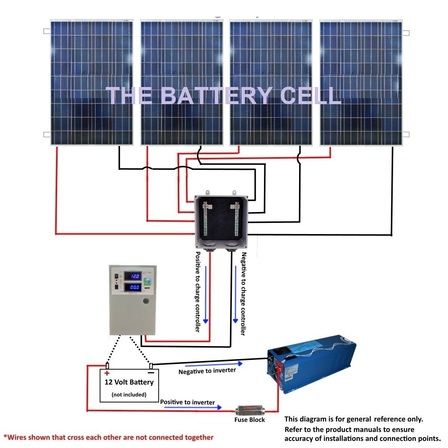
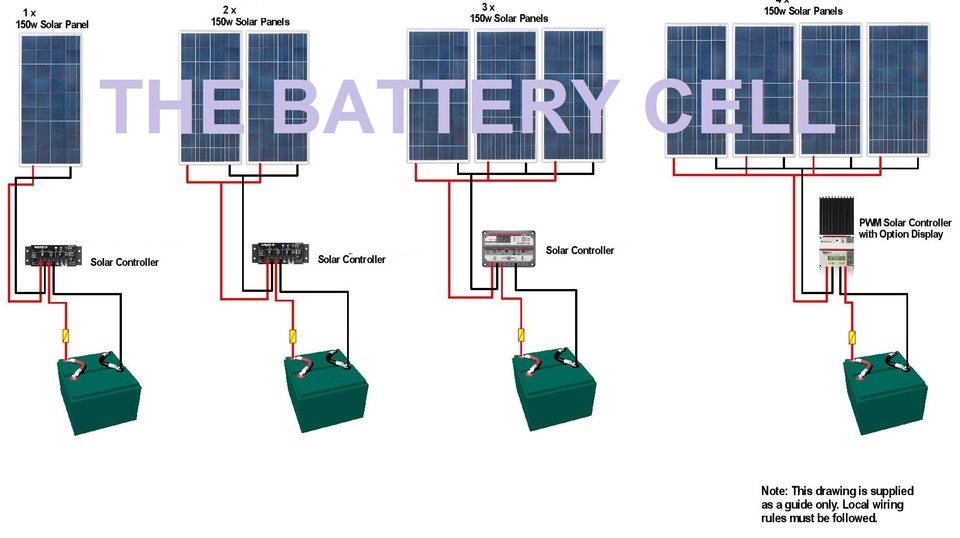
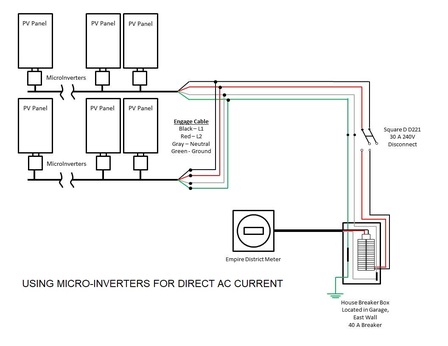
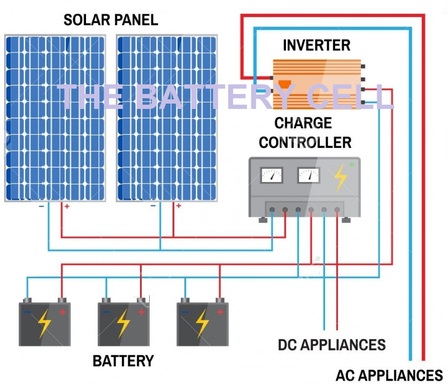
| Top |

